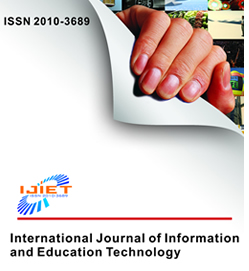
Applying process mining to analyze the behavior of learners in online courses (2021)
Title : Applying process mining to analyze the behavior of learners in online courses
Researcher : Arpasat, P., Premchaiswadi, N., Porouhan, P., Premchaiswadi, W.
Department : Doctor of Philosophy Program in Information Technologyy, Graduate School, Siam University
E-mail :
ฐานข้อมูลงานวิจัย มหาวิทยาลัยสยาม : https://e-research.siam.edu/kb/applying-process-mining-to-analyze/
Link to article: International Journal of Information and Education Technology, 2021, 11(10), pp. 436–443. https://doi.org/10.18178/ijiet.2021.11.10.1547
Publication: International Journal of Information and Education Technology / in Scopus
Bibliography : Arpasat, P., Premchaiswadi, N., Porouhan, P., Premchaiswadi, W. (2021). Applying process mining to analyze the behavior of learners in online courses. International Journal of Information and Education Technology, 11(10), 436–443. https://doi.org/10.18178/ijiet.2021.11.10.1547

Applying the perceived probability of risk and bias toward optimism: Implications for travel decisions in the face of natural disasters (2018)
[dflip id="7244" type="thumb"][/dflip]Researcher : Bongkosh Rittichainuwat, Robert Nelson, Fitri Rahmafitria
Department : Service Industry Management, Siam University, Bangkok, Thailand
E-mail : Bongkosh N. Rittichainuwat ngamson@gmail.com
Abstract : Unperceived risk leads to lack of preparedness. This study aims to examine tourists’ risk perception and travel decisions using as variables demographics, knowledge about safety, and country of residence. Samples were gathered in Thailand, Japan, Australia, and Indonesia. A total of 916 completed questionnaires of five replicated surveys were used in this study. More than halve of the respondents whose country had been affected by the Indian Ocean tsunami in 2004 did not perceive tsunami risk when 10 years has passed. Frequency of tsunami occurrence was positively related to perceived tsunami probability. This study confirms the theory of probability that low frequency of a natural disaster results in unperceived risks. Even if their destination had a history of tsunamis, tourists’ perceived risk of another such occurrence happening during their visit is low (that is, the risk of natural disaster is low). While the literature in earth science found that residents of risky areas tend to be optimistic about the place where they live, our study extends the theory of optimistic bias to indicate that the same optimistic bias is applicable to tourists. Asia and Southeast Asia were perceived as tsunami-prone but tourists still travelled there. Our study found that tourist risk perception was related to frequency of tsunami occurrence and was destination specific. The perception of probability of a natural disaster is also related to proximity and past experience. Replications are necessary to validate results before generalization.
Publication : Tourism Management Vol.66 June 2018
Link to Publication: https://www.sciencedirect.com/journal/tourism-management/vol/66/suppl/C
Bibliography : Rittichainuwat, B., Nelson, R., & Rahmafitria, F. (2018). Applying the perceived probability of risk and bias toward optimism: Implications for travel decisions in the face of natural disasters. Tourism Management, 66, 221-232. DOI: 10.1016/j.tourman.2017.09.013.
Author details in Scopus: Rittichainuwat, Bongkosh Ngamsom
Scopus Citations: https://www.scopus.com/sources.uri?DGCID=Scopus_blog_post_check2015
Google Scholar Citations: https://scholar.google.com/citations?user=ifUlKJoAAAAJ&hl=en
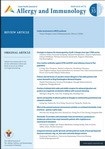
Association of HLA genotypes with Beta-lactam antibiotic hypersensitivity in children (2021)
Title : Association of HLA genotypes with Beta-lactam antibiotic hypersensitivity in children
Researcher : Clin.Prof.Suwat Benjaponpitak
Department : Faculty of Medicine, Siam University, Bangkok, Thailand
E-mail : med@siam.edu
Abstract : Background: Beta-lactam (BL) antibiotics hypersensitivity is common in children. Clinical manifestation of BL hypersensitivity varies from mild to severe cutaneous adverse drug reactions (SCARs).
Objective: To determine the association of HLA genotype and BL hypersensitivity and the prevalence of true drug allergy in patients with history of BL hypersensitivity.
Methods: A case-control study was performed in 117 children with aged 1-18 years. Children with history of non-SCARs BL hypersensitivity were evaluated for true drug hypersensitivity including skin test and drug provocation test. Tolerant control patients were children who could tolerate BL for at least 7 days without hypersensitivity reaction. HLA genotype (HLA-A, HLA-B, HLA-C and HLA-DRB1) were performed in 24 cases and 93 tolerant controls using PCR-SSO (polymerase chain reaction – sequence specific oligonucleotide probes).
Results: There were association of HLA-C*04:06 (OR = 13.14, 95%CI: 1.3-137.71; p = 0.027), and HLA-C*08:01 (OR = 4.83, 95%CI: 1.93-16.70; p = 0.016) with BL hypersensitivity. HLA-B*48:01 was strongly associated with immediate reaction from BL hypersensitivity (OR = 37.4, 95%CI: 1.69-824.59; p = 0.016) while HLA-C*04:06, HLA-C*08:01 and HLA-DRB1*04:06 were associated with delayed reaction (p < 0.05). Among 71 cases who were newly evaluated for BL hypersensitivity, only 7 cases (9.8%) had true BL hypersensitivity.
Conclusions: Less than 10% of children with suspected of BL hypersensitivity have true hypersensitivity. There might be a role of HLA-B, HLA-C and HLA-DRB1 genotype in predicting BL hypersensitivity in Thai children.
Link to Academic article: Asian Pacific Journal of Allergy and Immunology, 2021, 39(3), pp. 197–205. DOI: 10.12932/AP-271118-0449
Journal : Asian Pacific journal of allergy and immunology / in Scopus
Citation : Singvijarn, P., Manuyakorn, W., Mahasirimongkol, S., Wattanapokayakit, S., Inunchot, W., Wichukchinda, N., Suvichapanich, S., Kamchaisatian, W., & Benjaponpitak, S. (2021). Association of HLA genotypes with Beta-lactam antibiotic hypersensitivity in children. Asian Pac J Allergy Immunol. 39(3), 197–205. doi: 10.12932/AP-271118-0449. Epub ahead of print. PMID: 31012593.

Association of HLA genotypes with phenytoin induced severe cutaneous adverse drug reactions in Thai children (2020)
Title : Association of HLA genotypes with phenytoin induced severe cutaneous adverse drug reactions in Thai children
Researcher : Clin.Prof.Suwat Benjaponpitak
Department : Faculty of Medicine, Siam University, Bangkok, Thailand
E-mail : med@siam.edu
Abstract : Purpose: Phenytoin (PHT) is a common causative drug for severe cutaneous adverse drug reactions (SCARs) in children. SCARs, including drug reaction with eosinophilia and systemic symptoms (DRESS), Stevens-Johnson syndrome (SJS) and toxic epidermal necrolysis (TEN), are associated with a variation in HLA genotypes. Blood screening for specific HLA allele before PHT prescription would help in the reduction of the incidence of PHT induced SCARs. This study was to investigate the association between variations of HLA genotypes and PHT induced SCARs in Thai children.
Methods: Cases were Thai children aged between 0-18 years diagnosed with SCARs from PHT. Control groups were Thai children of corresponding age who had taken PHT for a least 12 weeks without any hypersensitivity reaction and healthy population controls. Blood samples from both groups were collected for HLA genotyping using a reverse-sequence specific oligonucleotide (SSO) probes method. Carrier rates of HLA alleles were compared between 22 cases (17 DRESS and 5 SJS-TEN), 60 tolerant controls and 649 population controls.
Results: Two HLA alleles includingHLA-B*51:01 and HLA-C*14:02 were significantly associated with PHT induced DRESS (OR 5.83; 95 % CI 1.36-25.00, p = 0.022 and OR 5.85; 95 % CI 1.16-29.35, p = 0.039). HLA-B*38:02 was significantly associated with PHT induced SJS-TEN (OR12.67; 95 % CI 1.50-106.89, p = 0.044). Haplotype analysis demonstrated the association of HLA haplotype A*11:01-B*51:01-C*14:02 and PHT induced DRESS compared to tolerant controls and the healthy population control group (OR 8.92; 95 % CI 1.47-54.02, p = 0.019, and OR 10.2; 95 % CI 3.04-34.21, p = 0.002). HLA haplotype B*38:02-C*07:01 in PHT induced SJS-TEN was significantly higher than those in tolerant controls and the healthy population control group (40 % vs 3.3 % vs 0.3 %; OR 19.33; 95 % CI 1.98-188.59, p = 0.027 and OR 215.67; 95 % CI 22.40-2076.04, p = 0.0003. HLA-B*15:02 was not associated with PHT induced SCARs.
Significance: An association betweenHLA-B*51:01 and HLA-C*14:02 and PHT induced DRESS and HLA-B*38:02 and PHT induced SJS-TEN has been demonstrated in Thai children.
Keywords: Drug reaction; HLA-B*38:02; HLA-B*51:01; HLA-C*14:02; Phenytoin.
Link to article : Epilepsy Research, 2020, 162, 106321. DOI: 10.1016/j.eplepsyres.2020.106321
Journal : Epilepsy Research Volume 162, May 2020,
Bibliography : Manuyakorn, W., Likkasittipan, P., Wattanapokayakit, S., Suvichapanich, S., Inunchot, W., Wichukchinda, N., Khongkhatithuml, C., Thampratankul, L., Kamchaisatian, W., Benjaponpitak, S., & Mahasirimongkol, S. (2020, May). Association of HLA genotypes with phenytoin induced severe cutaneous adverse drug reactions in Thai children. Epilepsy Res, 162, 106321. doi: 10.1016/j.eplepsyres.2020.106321. Epub 2020 Mar 13. PMID: 32272329.
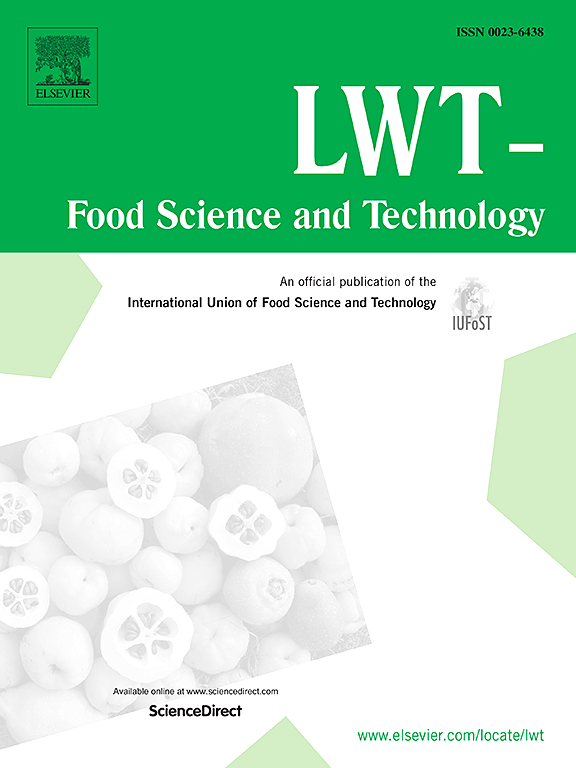
Astaxanthin encapsulated in beads using ultrasonic atomizer andapplication in yogurt as evaluated by consumer sensory profile(2015)
Title : Astaxanthin encapsulated in beads using ultrasonic atomizer andapplication in yogurt as evaluated by consumer sensory profile
Researcher : Taksima, T., Limpawattana, M., Klaypradit, W.
Department : สำนักอธิการบดี มหาวิทยาลัยสยาม
E-mail : maruj.lim@siam.edu
ฐานข้อมูลงานวิจัย มหาวิทยาลัยสยาม : –
Link to article: LWT, 2015, 62(1), pp. 431–437. https://doi.org/10.1016/j.lwt.2015.01.011
Journal : LWT / in Scopus
Bibliography : Taksima, T., Limpawattana, M., & Klaypradit, W. (2015). Astaxanthin encapsulated in beads using ultrasonic atomizer and application in yogurt as evaluated by consumer sensory profile. LWT – Food Science and Technology, 62(1, Part 2), 431-437. https://doi.org/10.1016/j.lwt.2015.01.011

Authenticity in Screen Tourism: Significance of Real and Substituted Screen Locations (2018)
Title : Authenticity in Screen Tourism: Significance of Real and Substituted Screen Locations
Researcher : Rittichainuwat, B., Laws, E., Scott, N., Rattanaphinanchai, S.
Department : Service Industry Management, Siam University, Bangkok, Thailand
E-mail : Bongkosh N. Rittichainuwat ngamson@gmail.com
Abstract : This article examines the meaning and significance of screen tourism location authenticity. The article analyses the interrelationship among places (real vs. substituted historical sites associated with tourists’ favorite films and TV programs) and activities (reenactment of photo shootings and costume rentals). The study finds a number of visitor segments go to screen tourism locations. For Screen Authentic Tourists, objective and existential authenticity do not matter as long as the destinations are associated with their favorite films. Screen tourism is a rapidly growing sector; this article examines its dynamics and evaluates various approaches to screen tourism authenticity, particularly theoplacity.
Publication : Journal of Hospitality and Tourism Research Vol.42 No.8 November 2018
Link to Publication: https://journals.sagepub.com/toc/jhtd/42/8
Bibliography : Rittichainuwat, B., Laws, E., Scott, N., & Rattanaphinanchai, S. (2018). Authenticity in screen tourism: Significance of real and substituted screen locations. Journal of Hospitality & Tourism Research, 42(8), 1274–1294. https://doi.org/10.1177/1096348017736568
Author details in Scopus: Rittichainuwat, Bongkosh Ngamsom
Scopus Citations: https://www.scopus.com/sources.uri?DGCID=Scopus_blog_post_check2015
Google Scholar Citations: https://scholar.google.com/citations?user=ifUlKJoAAAAJ&hl=en
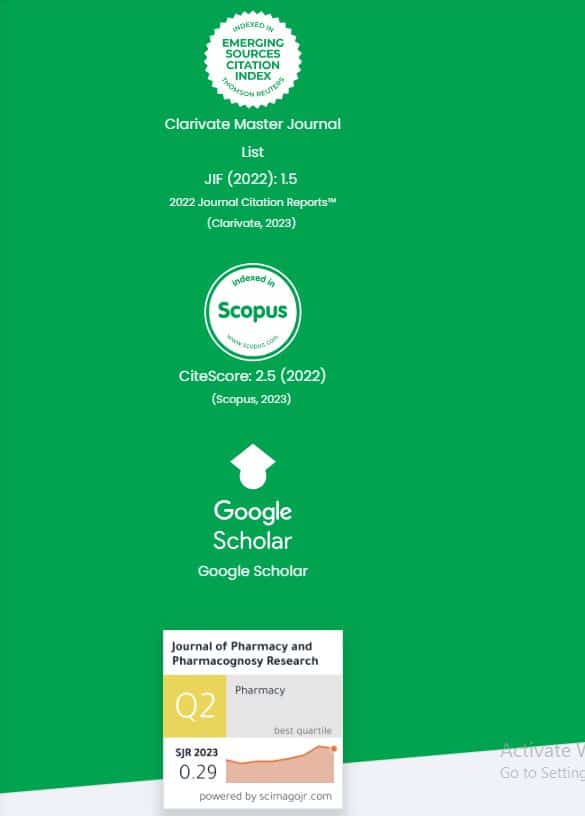
Bioactive compound and chemical characterization of lactic acid bacteria from fermented food as bio-preservative agents to control food-borne pathogens | Compuestos bioactivos y caracterización química de bacterias lácticas de alimentos fermentados como agentes bioconservantes para el control de patógenos alimentarios (2023)
Title : Bioactive compound and chemical characterization of lactic acid bacteria from fermented food as bio-preservative agents to control food-borne pathogens | Compuestos bioactivos y caracterización química de bacterias lácticas de alimentos fermentados como agentes bioconservantes para el control de patógenos alimentarios
Researcher : Techaoei, S., Jarmkom, K., Dumrongphuttidecha, T., Khobjai, W.
Department : Faculty of Medicine, Siam University, Bangkok, Thailand
Abstract : Context: Lactic acid bacteria (LAB), which are found in many fermented foods, are known to produce antimicrobial compounds that play a vital role in food bio-preservation.
Aims: To screen, identify, characterize, and determine the secondary metabolites of LAB isolated from Thai fermented foods that are beneficial against Escherichia coli and Staphylococcus aureus.
Methods: The antimicrobial activity of cell free supernatant (CFS) was evaluated by agar well diffusion assay, and determining the minimum inhibitory concentration (MIC), minimum bactericidal concentration (MBC). Bacterial strains were identified by matrix-assisted laser desorption ionization-time of flight mass spectrometry (MALDI-TOF MS), and chemical compound was conducted by gas chromatography and mass spectrometry (GC-MS). Additionally, microbial dynamic and bile salt tolerance were assessed.
Results: Seven of the 90 lactic acid isolates from Thai fermented foods, showed antibacterial activity against E. coli and S. aureus in the 12.00–16.00 mm inhibitory zone. It was identified that the bacteria were Lactobacillus pentosus, Lactobacillus farciminis, Lactobacillus brevis, and Lactobacillus plantarum. The best antibacterial activity was represented by LBST1861 strain, which also provided bile salt resistance at 0.3% for 24 hours and had MIC and MBC values of 12.5 mg/mL and 50.0 mg/mL against S. aureus and E. coli, respectively. Furthermore, the GC-MS discovered a total of 16 chemical compounds that may be used to limit microbial growth and has a potential to be employed as a bio-preservative.
Conclusions: The most potent strain of LBST1861 strain against S. aureus and E. coli as L. plantarum, isolated from fermented foods in Thailand, generated significant bioactive chemicals that can be applied to promote food products.
Keywords: antimicrobial activity; bioactive compounds; fermented foods; lactic acid bacteria; probiotics.
Link to article: Journal of Pharmacy and Pharmacognosy Research, 2023, 11(6), pp. 1044–1055. https://doi.org/10.56499/jppres23.1713_11.6.1044
Journal : Journal of Pharmacy and Pharmacognosy Research / in Scopus
Citation : Techaoei, S., Jarmkom, K., Dumrongphuttidecha, T., & Khobjai, W. (2023). Bioactive compound and chemical characterization of lactic acid bacteria from fermented food as bio-preservative agents to control food-borne pathogens | Compuestos bioactivos y caracterización química de bacterias lácticas de alimentos fermentados como agentes bioconservantes para el control de patógenos alimentarios. Journal of Pharmacy and Pharmacognosy Research, 11(6), 1044–1055. https://doi.org/10.56499/jppres23.1713_11.6.1044
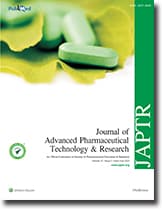
Bioactivities of karanda (Carissa carandas Linn.) fruit extracts for novel cosmeceutical applications (2021)
Title : Bioactivities of karanda (Carissa carandas Linn.) fruit extracts for novel cosmeceutical applications
Researcher : Monsicha Khuanekkaphan1, Warachate Khobjai2, Chanai Noysang3, Nakuntwalai Wisidsri1, Suradwadee Thungmungmee3
Department : 1 Department of Health and Aesthetics, Thai Traditional Medicine College, Rajamangala University of Technology, Thanyaburi, Pathum Thani, Thailand
2 Department of Clinical Chemistry, Faculty of Medical Technology, Nation University, Lampang, Thailand
3 Department of Innovation of Health Products, Thai Traditional Medicine College, Rajamangala University of Technology, Thanyaburi, Pathum Thani, Thailand
Abstract : The aim of this research was to determine the total phenolic content (TPC), antioxidation, antiaging, and antibacterial activities of Carissa carandas Linn., and aims at the novel plant sources which is utilized for their cosmeceutical applications. The two conditions (fresh and dried) and three stages (unripe, ripe, and fully ripe) of C. carandas were extracted by ethanolic maceration. Folin–Ciocalteu assay was used for determining the TPC. 2,2-diphenyl-1-picrylhydrazyl (DPPH) and 2,2′-azinobis(3-ethylbenzothiazoline-6-sulfonic acid) (ABTS) assays were used for estimating antioxidant activity. The inhibitory tyrosinase activities were measured using the modified dopachrome assay. Antiaging was evaluated by inhibition of collagenase and elastase, and antibacterial activities. The result of six extracts from C. carandas showed that the highest phenolic content and elastase inhibition of the fresh fruit in fully ripe stage were 100.31 ± 2.64 mg GAE/g extract and 14.11% ± 0.95%, respectively. The fresh fruit in the unripe stage showed that the strongest percentage of DPPH IC50 and collagenase inhibitory activity were 29.11 ± 0.23 μg/mL and 85.94% ± 2.21%, respectively. The ethanolic extract of unripe dried fruit exhibited the highest antioxidant activity in the of ABTS assay, with an IC50 of 0.17 ± 0.01 μg/mL. The MBC displayed the dried fruit ripe stage anti Cutibacterium acnes, Staphylococcus epidermidis, and Staphylococcus aureus strains were 25.0, 25.0, and 16.25 mg/mL, respectively. The fresh fruit in the ripe stage showed that the strongest inhibition tyrosinase was 93.88% ± 5.64%. The conclusion of this research indicates that the fresh fruit of C. carandas fruit extracts has high potential as a novel cosmeceuticals’ applications to antiaging and skin whitening. The dried fruit in ripe stage extract has the most effective ingredient for antiacne products.
Keywords: Antiaging, antibacterial, Carissa carandas, cosmeceuticals, karanda
Link to Academic article: DOI: 10.4103/japtr.JAPTR_254_20
Journal : Journal of Advanced Pharmaceutical Technology and Research, 2021, 12(2)
Bibliography : Khuanekkaphan, M., Khobjai, W., Noysang, C., Wisidsri, N., & Thungmungmee, S. (2021). Bioactivities of karanda (Carissa carandas Linn.) fruit extracts for novel cosmeceutical applications. J Adv Pharm Technol Res, 12(2) 162-168. Retrieved from https://www.japtr.org/text.asp?2021/12/2/162/314675
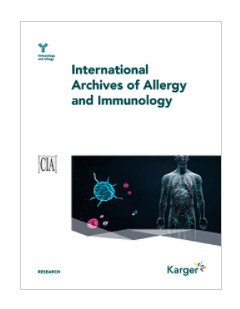
Blood Coagulation and Asthma Exacerbation in Children (2016)
Title : Blood Coagulation and Asthma Exacerbation in Children
Researcher : Clin.Prof.Suwat Benjaponpitak
Department : Faculty of Medicine, Siam University, Bangkok, Thailand
E-mail : med@siam.edu
Abstract : Background: Recent studies have demonstrated the activation of coagulation pathways in asthmatic airways. This study aimed to determine systemic blood coagulation during asthma exacerbation compared with the stable state in children.
Methods: Pediatric patients (aged between 5 and 15 years) suffering from asthma exacerbation were enrolled. von Willebrand factor (vWF), plasminogen activator inhibitor type-1 (PAI-1), protein C, D-dimer, prothrombin fragment 1 + 2 (F1 + 2), thrombin-antithrombin complex (TAT), and C-reactive protein (CRP) levels were measured during asthma exacerbation and stable state.
Results: A total of 22 patients were enrolled. The median vWF, PAI-1, and CRP during asthma exacerbation were significantly higher than those of the stable state: 147.5% (interquartile range, IQR: 111.05-196.57) versus 94% (IQR: 69.72-109.62, p < 0.001), 41.9 ng/ml (IQR: 21.91-48.61) versus 26.17 ng/ml (IQR: 15.89-34.44, p < 0.03), and 4.46 mg/l (IQR: 2.15-16.23) versus 0.87 mg/l (IQR: 0.20-3.89, p < 0.015), respectively. However, the median protein C during asthma exacerbation was significantly lower than that of the stable state: 99.5% (IQR: 86.75-117) versus 113% (IQR: 94-115.25), p = 0.01. No significant difference was found between the levels of D-dimer, F1 + 2, and TAT during asthma exacerbation and stable state. Ultimately, D-dimer was positively correlated with asthma exacerbation score (R = 0.466, p = 0.027). A significant correlation was observed between vWF and CRP (R = 0.527, p = 0.012).
Conclusion: Evidence was found of increased endothelial activation and increased PAI-1 during asthma exacerbation. This may emphasize the potential role of blood coagulation in asthma exacerbation.
Link to Academic article: https://www.karger.com/Article/FullText/446775
Journal : International Archives of Allergy and Immunology Vol. 170, No. 2, 2016
Bibliography : Manuyakorn, W., Mairiang, D., Sirachainan, N., Kadegasem, P., Kamchaisatian, W., Benjaponpitak, S., & Chuansumrit, A. (2016). Blood coagulation and asthma exacerbation in children. Int Arch Allergy Immunol, 170(2), 75-83. doi: 10.1159/000446775.
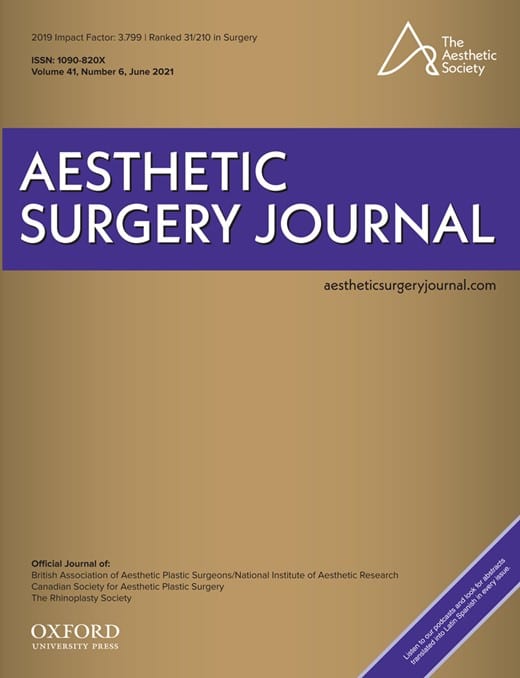
Cadaveric Dissections to Determine Surface Landmarks Locating the Facial Artery for Filler Injections (2021)
Title : Cadaveric Dissections to Determine Surface Landmarks Locating the Facial Artery for Filler Injections
Researcher : Tansatit, T., Kenny, E., Phumyoo, T., Jitaree, B.
Abstract : Background: The facial artery is a high-risk structure when performing filler injections at the nasolabial fold, buccal, and mandibular regions.
Link to Academic article: https://doi.org/10.1093/asj/sjaa235
Journal : Aesthetic Surgery Journal, 2021, 41(6).
Bibliography : Tansatit, T., Kenny, E., Phumyoo, T., & Jitaree, B. (2021). Cadaveric Dissections to Determine Surface Landmarks Locating the Facial Artery for Filler Injections. Aesthetic Surgery Journal, 41(6), NP550–NP558. https://doi.org/10.1093/asj/sjaa235